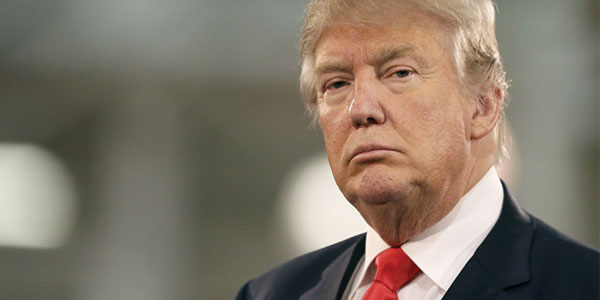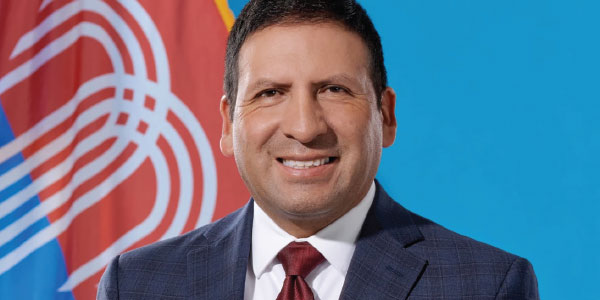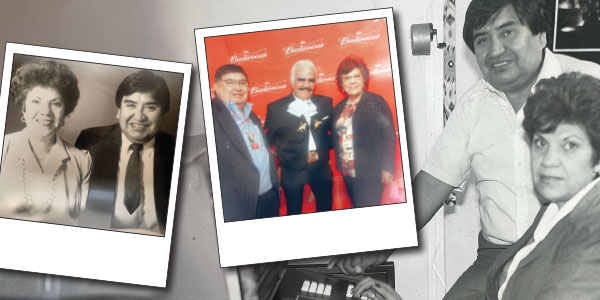
By Jorge Ramos
Two years ago, many Americans thought it implausible that a candidate with racist, sexist, xenophobic and anti-environmental ideas would ever be elected president. But when it comes to Donald Trump, we were wrong. And we’ve been wrong repeatedly.
On June 16, 2015, Trump officially launched his presidential bid in New York, famously saying about Latin American immigrants: “They’re bringing drugs. They’re bringing crime. They’re rapists. And some, I assume, are good people. … It’s coming from more than Mexico. It’s coming from all over South and Latin America.”
Those comments were racist — Trump likened undocumented Latin American immigrants to criminals. We’ll never know whether he believes such things, or whether he just said that to win some votes. However, as I have pointed out many times before, his characterization of immigrants is false. Less than 3% of undocumented immigrants commit felonies, according to the Migration Policy Institute.
Of course, since 2015 many Trump supporters have protested the fact that his comments were labeled racist. They say that the public and media misunderstood Trump, and that he was really only talking about undocumented immigrants with criminal records. Maybe that’s true — but that’s not what Trump said.
In retrospect, it was a big mistake not to challenge Trump’s racist rhetoric more vigorously in June 2015. Some voters actually thought his campaign announcement was all a joke, and a few media executives let him speak unchallenged in order to improve their ratings. Several Democrats considered Trump to be an easy-to-defeat rival, and the Mexican government didn’t even bother responding to his attacks. Only the Latino press and a few journalists in the English-language media criticized the way he criminalized several millions of immigrants.
Now, two years later, we’re seeing the impact that Trump’s rhetoric has had. Frequent attacks against immigrants, both physical and verbal, are reported often in the U.S., and I’ve recently spoken with children terrorized by the possibility that the Trump administration will deport their parents. Social media is full of attacks against foreigners, and the people behind these attacks are using phrases and ideas very similar to Trump’s. One has to assume that their reasoning is pretty straightforward: If the president can freely insult minorities, women, Muslims, immigrants and disabled people, why shouldn’t they?
According to the Southern Poverty Law Center, the number of hate groups operating in the U.S. climbed from 784 in 2014 to 917 last year. In the same period, organizations affiliated with the Ku Klux Klan grew to 130 from 72.
Hatred is contagious — and it often trickles down from the top.
When it comes to politics, nothing is coincidental. We could debate whether Trump’s racist and anti-immigrant comments contributed to the increase of extreme groups, or whether an existing xenophobic and violent environment in the U.S. just ended up benefiting him as a candidate. Either way, people have been victimized.
My point is that for two years now we’ve been listening to Trump’s continued racist commentary, and our reaction as Americans has been lukewarm, late, ineffective — and almost complicit.
P.S.: I suppose it’s high time that we acknowledge that the current administration and Congress will do nothing to prevent another massacre or shootout. The recent violent attack against a group of members of Congress on a baseball field in Virginia seemingly gave no one pause. No action on guns followed, just as no action followed the killing of 20 children at Sandy Hook Elementary School in 2012.
Nevertheless, the data is terrifying: The Congressional Research Service reported in 2012 — just a month before Sandy Hook — that there were more firearms in the U.S. than people. And an analysis conducted by The Washington Post recently showed that there were 154 mass shootings — in which four or more individuals were killed or hurt, excluding the perpetrators — in the first 165 days of this year.
I understand the historical and cultural reasons that the Second Amendment is defended so stridently. I know that the Constitution guarantees the right for the public to own guns. What I don’t understand is why the public needs access to military-grade weapons, or why it’s so difficult to ban people with mental-health problems or criminal records from purchasing rifles and pistols.
The sad thing is that soon — way too soon — there will be another massacre. I hope it doesn’t happen close to you.
(Jorge Ramos, an Emmy Award-winning journalist, is a news anchor on Univision. Originally from Mexico and now based in Florida, Ramos is the author of several best-selling books. His latest is “Take a Stand: Lessons From Rebels.” Email him at jorge.ramos@nytimes.com.)
_______________________________________________________________________________
Dos Años de Trump
Muchos pensaban que los votantes en Estados Unidos jamás escogerían a un candidato presidencial con ideas racistas, sexistas, xenofóbicas y contra el medio ambiente. Pero con Donald Trump todos nos hemos equivocado. Muchas veces.
Todo comenzó hace dos años. Cuando el 16 de junio del 2015 lanzó su candidatura presidencial en su torre dorada de Nueva York, dijo lo siguiente sobre los inmigrantes latinoamericanos: “Traen drogas. Traen crimen. Son violadores. Y algunos, supongo, son buenas personas … Esto viene más allá de México. Viene del sur y de América Latina.”
Estos son comentarios racistas. Trump presentó a todos los inmigrantes de América Latina como delincuentes. Nunca sabremos si lo hizo únicamente para conseguir votos. Pero su retrato de los inmigrantes que vienen del sur es falso y ofensivo. (Menos del 3% de los indocumentados comete delitos serios, o “felony” en inglés, según el Migration Policy Institute.)
Algunos de los seguidores de Trump me han reclamado. Dicen que hemos malinterpretado a su candidato, ahora presidente, y que él en realidad estaba hablando de inmigrantes sin documentados con antecedentes criminales. Quizás. Pero él no dijo eso.
En retrospectiva fue un grave error no enfrentar duramente a Trump en junio del 2015 por sus comentarios racistas. Algunos lo tomaron a broma. Otros sólo pensaron en los ratings que traería. Varios Demócratas creyeron que sería un contrincante fácil de vencer. Y el gobierno de México ni siquiera le contestó. Sólo la prensa latina, y algunos pocos periodistas en inglés, criticaron la manera en que Trump criminalizó a millones de inmigrantes en Estados Unidos.
Las palabras de Trump han tenido un terrible efecto en Estados Unidos durante los últimos dos años. Hemos reportado sobre frecuentes ataques, físicos y verbales, contra inmigrantes, y he entrevistado a niños aterrados de que Trump deporte a sus papás.
Además, las redes sociales están plagadas de ataques a extranjeros utilizando frases e ideas muy similares a las de Trump. El razonamiento de los atacantes es muy primitivo: Si su líder insulta a minorías, mujeres, musulmanes, migrantes y gente con discapacidades, ¿por qué ellos no pueden hacer lo mismo?
El odio es contagioso y se mueve de arriba para abajo. Más datos.
El número de los llamados “grupos de odio” — o hate groups , en inglés — pasó de 784 a 917 (del 2014 al 2016), según el Southern Poverty Law Center. Las organizaciones afiliadas al Ku Klux Klan crecieron de 72 a 130 en el mismo período.
En política nada es coincidencia. Lo único que podríamos discutir es si los comentarios racistas y antiinmigrantes de Trump fomentaron el crecimiento de estos grupos extremistas o si ya existía un ambiente xenofóbico y violento que fue aprovechado por el entonces candidato republicano. Sea como sea, las víctimas son reales.
Mi punto es que hace dos años todos escuchamos los comentarios racistas de Trump y la respuesta fue tibia, tardía, pobre e inefectiva. Casi cómplice.
Postdata con rifle: Me doy por vencido. Creo que ya es hora que todos reconozcamos que el actual gobierno y congreso de Estados Unidos no van a hacer absolutamente nada para evitar otra masacre o tiroteo. El violento ataque a un grupo de congresistas en un campo de béisbol en Virginia no hizo recapacitar a nadie. Como tampoco lo fue el asesinato de 20 niños en la escuela Sandy Hook en el 2012.
Los datos son aterradores. Un reporte del Congressional Research Service concluyó que en Estados Unidos hay más armas que personas. Un análisis del Washington Post asegura que ha habido 154 masacres o tiroteos en los primeros 165 días del 2017. (Una masacre se considera cuando cuatro o más personas mueren o son heridas, sin considerar al pistolero o a los responsables.)
Entiendo las razones históricas y culturales por las que tanto se defiende la segunda enmienda de la constitución, que garantiza la portación de armas en Estados Unidos. Pero no entiendo por qué se necesitan armas de guerra para cazar patos ni por qué es tan difícil prohibir la compra de rifles y pistolas a que personas con problemas mentales o historial criminal.
Esto lo que significa es que pronto, muy pronto, habrá otra masacre. Ojalá no sea cerca de su casa.
(Jorge Ramos, periodista ganador del Emmy, es el principal director de noticias de Univision Network. Ramos, nacido en México, es autor de nueve libros de grandes ventas, el más reciente de los cuales es “A Country for All: An Immigrant Manifesto”.)
(¿Tiene algún comentario o pregunta para Jorge Ramos? Envié un correo electrónico a Jorge.Ramos@nytimes.com. Por favor incluya su nombre, ciudad y país.)










